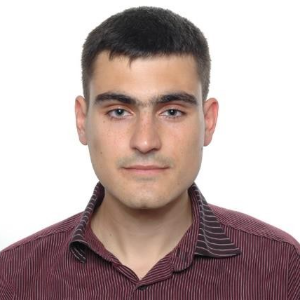Title : Quantitative analysis of MB and RB photodegradation in the presence of metal-oxide catalyst nanoparticles synthesized by pulsed laser ablation in water
Abstract:
Pulsed laser ablation in liquid (PLAL) is green technique for synthesis of nanoparticles. In PLAL, the solid target immersed in liquid is irradiated by pulsed laser beam. Plasma plume is formed during the interaction between laser pulse and target, which after its collapse releases the nanoparticles in liquid, resulting in colloidal solution of nanoparticles. The advantages of PLAL, when compared to chemical synthesis of nanoparticles, are the very high purity of synthesized nanoparticles, absence of any residual byproducts, cost-effectiveness, nanoparticles properties engineering possibility through modification of PLAL parameters and possibility of nanoparticles synthesis from large variety of materials due to fact that any solid material can be ablated. In this paper the TiO2 and ZnO nanoparticles are synthesized with PLAL and used as catalyst for Methylene Blue and Rhodamine B photodegradation during the UV and visible light irradiation. The photodegradation rate dependence on different catalyst and dye concentrations is studied. The obtained dependences are discussed and explained by recognizing and summing up the effects of various physical and chemical processes contributing to the value of photodegradation rate in each analysed case. Both, UV and visible photocatalytic efficiency of laser synthesized TiO2 nanoparticles in this paper are much higher when compared to the ones obtained with same amounts of commercial Aeroxide P25 nanoparticles. The photocatalytic efficiency of ZnO nanoparticles is higher than one obtained with the same amount of ZnO nanoparticles synthesized by sol-gel method. It was also found that heating of as-synthesized TiO2 nanoparticles can lead to improvement of their photocatalytic efficiency due to changes in crystal structure.
Audience take-away:
- High photocatalytic efficiency TiO2 and ZnO nanoparticles synthesized by pulsed laser ablation in water points to possibility of wider application of this method in production of photocatalytic materials
- The recognition of various effects contributing to TiO2 and ZnO photocatalytic efficiency is helpful for purposes of photocatalytic systems optimization, especially those applied in water purification
- How to prepare TiO2 and ZnO nanoparticles by laser ablation in liquid



